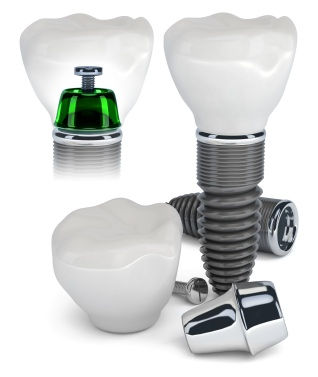Dental Implants

Dental implants are artificial tooth replacements that were first developed half a century ago by a Swedish scientist named Per-Ingvar Branemark. Implants arose from the patient’s need to secure loose-fitting dentures. Since the advent of the implant, engineering and enhancements to the implant have enabled dentists to expand the implant’s usefulness, including the replacement of missing or lost teeth. Today, implant techniques provide a wide range of tooth replacement solutions including:
- Single Tooth Replacement
- Anterior Replacement
- Posterior Replacement
- Full Upper Replacement
The root implant—by far, the most popular—is the most effective type of implant because it mirrors the size and shape of a patient’s natural tooth. This implant is often as strong as the patient’s original tooth. The implant, or artificial root, is placed into the jawbone under local anesthesia and allowed to heal and integrate with the bone. Once the healing process is completed and the jawbone is attached to the implant, the patient returns to the dental office where the implant is fitted with the new tooth. This process generally takes anywhere from three to eight months.
In most cases, implants are the most predictable, esthetic, and long-lasting solution to tooth replacement.
